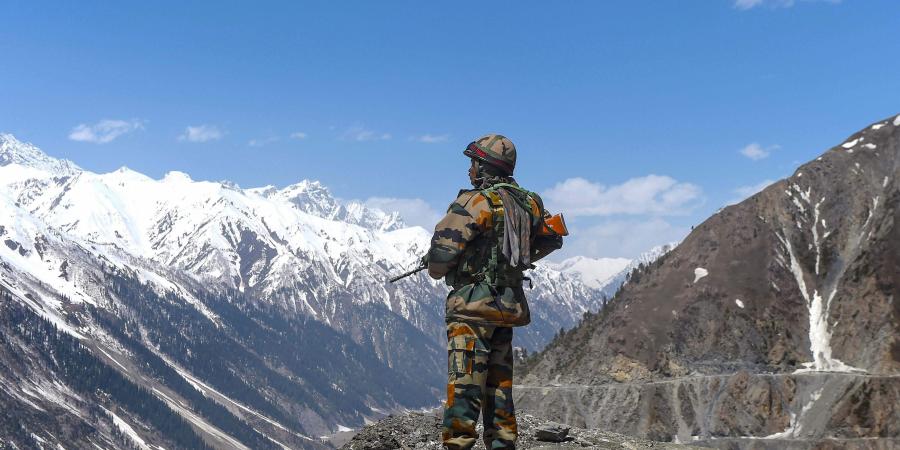New Delhi, May 19:
China has begun constructing a second bridge across the Pangong Lake that will be capable of accommodating heavy armoured vehicles, months after completing another bridge in the same region that is claimed by India.
The second bridge is being constructed parallel to the first bridge, which is narrower and was completed in April this year. The first bridge is being used to move equipment such as cranes needed to build the second one, according to experts who analysed the latest high-resolution satellite imagery of the site.
When reports about the construction of the first bridge linking the north and south banks of the strategic Pangong Lake emerged in January, the external affairs ministry said the structure is located in areas under illegal occupation by China for 60 years. The ministry’s spokesperson, Arindam Bagchi, said then that India has never accepted such illegal occupation.
Damien Symon, an analyst with The Intel Lab who tweets as @detresfa_, said an analysis of satellite imagery suggested that work on the first bridge – which he described as a “service bridge” – had been wrapped up by April. “Cranes were seen on site earlier as well, supporting preparations for the entire project,” he said.
The second bridge is in an advanced stage, and “shallow foundations and columns to support each of the spill-out abutments” are visible alongside the first bridge, Symon said. “The current assessment indicates there could be a space or gap left to allow for the movement of boats under the second bridge as well,” he said.
Measurements indicate the second bridge will finally have a width of 10 metres and a length of 450 metres. “Road connectivity work has begun in parallel, linking both ends of the bridge,” Symon said.
The new bridge is being built simultaneously from both banks and its dimensions suggest it will be capable of accommodating larger and heavier vehicles, including tanks and armoured vehicles.
Both bridges are located across the narrowest section of the 134-km-long strategic lake. The first bridge was located south of a crucial People’s Liberation Army (PLA) position on the north bank of Pangong Lake, at a spot where the two banks of the lake are 500 metres apart. Both bridges will cut the distance between Chinese troop positions on the north bank to a key PLA base at Rutog, on the eastern end of the lake, by around 150 km.
An army spokesperson didn’t comment on the reported construction activity at Pangong Lake. There was no immediate reaction from government officials either.
The standoff between Indian and Chinese troops in Ladakh sector of the Line of Actual Control (LAC) recently entered its third year. Following the withdrawal of frontline troops from the banks of Pangong Lake and at Gogra, the two sides have not been able to make any headway in disengagement and de-escalation at other friction points despite numerous rounds of diplomatic and military talks.
Earlier this month, Indian Army chief Gen Manoj Pande said the force aims to “re-establish trust and tranquillity” with the PLA, but cautioned that “it can’t be a one-way affair”. He questioned China’s intention behind dragging out the process to arrive at a framework that will be the basis for delineation and demarcation of the boundary between the two countries, or what is known as the boundary question.
Pande said the army’s “aim and intention” is to restore the status quo ante of April 2020, adding the force’s posture along the LAC is robust, and adequate forces are available to deal with any contingency. He said Indian soldiers are holding important positions, and their posture is “firm and resolute” to prevent any attempt by the PLA to alter the status quo.
Last week, Pande visited Ladakh sector for a security review.
The two countries have been locked in the border row since April-May 2020, and despite disengagement of soldiers at Galwan Valley, Pangong Lake and Gogra, the two side still have around 60,000 troops each and advanced weaponry deployed in the Ladakh theatre.
The two sides have held 15 rounds of military talks to cool border tensions, but problems at Patrol Point-15 near Kongka La, Depsang Bulge in Daulet Beg Oldi sector, and Charding Nullah Junction in Demchok sector are still on the negotiating table.
Former director general of military operations, Lt Gen (retired) Vinod Bhatia said the construction activity was a sign of China’s intention to stay put in the area, and was yet another move to beef up infrastructure near the LAC. “It will facilitate quick military movement across the lake,” he said.




